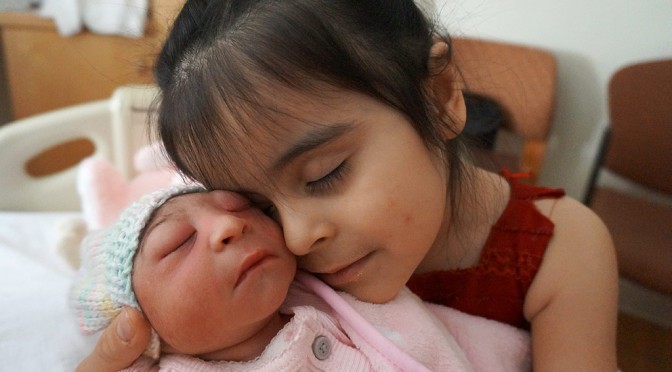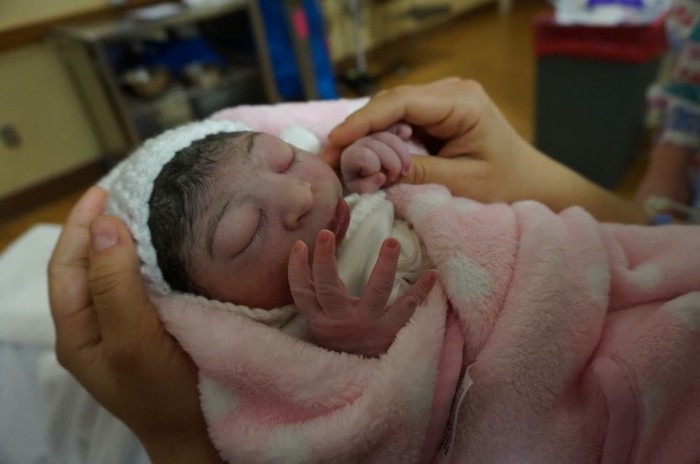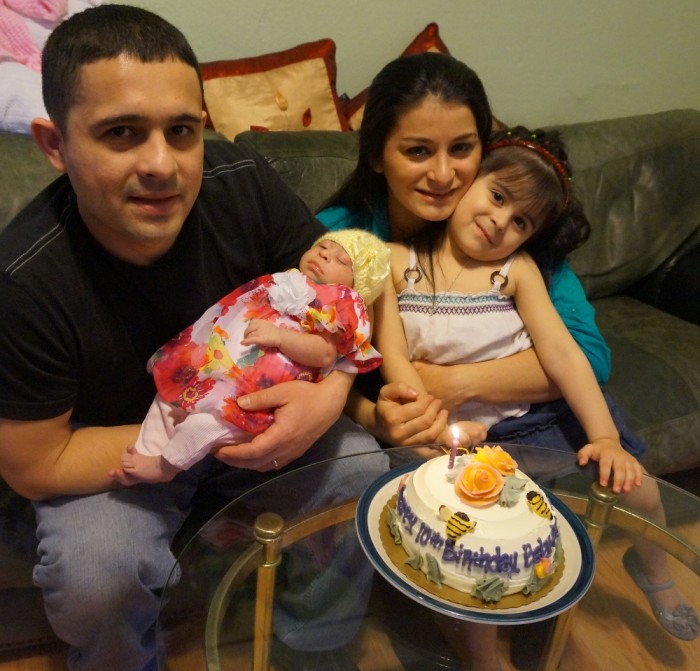
Pioneering doctor reveals the science behind abortion reversals – and the babies saved
The kind of abortion Dr. Delgado (and the doctors on his impressive team) can reverse is commonly known as a medication or medical abortion. It is performed through the use of a combination of pills, almost always in the first trimester of pregnancy.
In the stunning 22-minute video posted below, Dr. Delgado puts to shame the claims of abortion advocates who argue that his treatment is unscientific and deceptive. Dr. Delgado’s team of doctors around the nation have a 60% success rate, when they treat mothers who want to stop a medication abortion.
The team is also there for pregnant women in other capacities, promising to not leave them “stranded or alone,” and to help them find solutions to other pregnancy-related needs. The team also urges women to not think it is too late. If women want a reversal, even if they are told that they cannot stop the procedure, they should call the Abortion Pill Reversal hotline: 877-558-0333.

Natasha is one young mother who successfully went through the abortion reversal process. She writes passionately about her love for her baby son which she now gets to experience every day.
“I don’t know where I would be right now if I wasn’t for this website and the angels that guided me every step of the way…Rebekah Chaveste has also spoken out about her success story which led to the birth of her son, Zechariah.
There are moments in life where you feel trapped. Some of us have this illusion that a woman need to be ‘ready’ to have a baby. She needs to plan it, it’s the only way it will work. I learned that a woman can never be ready for motherhood. You learn as you go…Motherhood is an amazing experience…The love and joy you feel when you hold that beautiful baby is indescribable. I learned that you should never let your fears take that away from you.” [Read Natasha’s full story here.]

Arizona recognized the stellar service that Dr. Delgado and his team provide to women who change their minds about abortion. The state passed a law nearly three months ago, requiring that factual, medical information about abortion reversal be provided to women seeking a medication abortion.
Abortion Pill Reversal (APR) has named five foundational principles that guide the organization’s actions in aiding women who want to stop their abortions:
-
It is reasonable and appropriate to respect a woman’s right to choose to reverse a medical induced abortion.
-
A woman should never be coerced into starting or continuing an abortion.
-
Human beings are valuable and should be protected at all stages of their development.
-
Mifepristone does not significantly increase the chances of birth defects. Reversing a mifepristone medical abortion is within reasonable medical practice.
-
Progesterone can reverse the effects of mifepristone and has been safely used in pregnancy for over 40 years.
Watch Dr. Delgado persuasively refute abortion advocates’ claims that abortion reversal is “junk science,” “not scientifically supported,” and that laws requiring doctors to inform women of their options “force[] doctors to lie to their patients.” Hear him tell about real lives saved and mothers empowered to give life to their preborn babies.
Source: LiveAction News

 This
is very good. A California judge has ruled that it is unconstitutional
to permit nursing homes to make medical decision on behalf of their
incompetent patients.
This
is very good. A California judge has ruled that it is unconstitutional
to permit nursing homes to make medical decision on behalf of their
incompetent patients. As
promised, over the weekend “Women on Waves,” the same folks who brought
you the “abortion ship,” abortion hotlines where you can learn how to
self-abort, and the “I need an abortion” website where you can order
abortifacients launched their “abortion drone.”
As
promised, over the weekend “Women on Waves,” the same folks who brought
you the “abortion ship,” abortion hotlines where you can learn how to
self-abort, and the “I need an abortion” website where you can order
abortifacients launched their “abortion drone.” On
Monday, the last day of the current term, the Supreme Court agreed to
issue a stay thus allowing nine Texas abortion clinics to remain open
while the Justices consider whether to hear an appeal of two provisions
of Texas’ omnibus H.B. 2 that had been scheduled to go into effect in
July.
On
Monday, the last day of the current term, the Supreme Court agreed to
issue a stay thus allowing nine Texas abortion clinics to remain open
while the Justices consider whether to hear an appeal of two provisions
of Texas’ omnibus H.B. 2 that had been scheduled to go into effect in
July. Periodically,
readers zipping through cyberspace discover that hundreds of millions
of women are “missing.” The assailant? Sex-selection abortion. One of
those newcomers to the discussion emailed me, asking what could I send
her and/or post on NRL News Today.
Periodically,
readers zipping through cyberspace discover that hundreds of millions
of women are “missing.” The assailant? Sex-selection abortion. One of
those newcomers to the discussion emailed me, asking what could I send
her and/or post on NRL News Today.
 Increasingly,
organizations providing and promoting abortion deem national laws
prohibiting abortion as irrelevant in their work advising women on how
to perform illegal ‘do-it-yourself (DIY) abortion’. The latest example
comes from the NGO Ipas and its partners working to use “mobile
technology to expand women’s access to safe, comprehensive abortion
care”, including in three countries where abortion is
restricted-Bangladesh, Kenya and Nigeria. The information was shared
during a recent youth and technology conference in San Francisco.
Increasingly,
organizations providing and promoting abortion deem national laws
prohibiting abortion as irrelevant in their work advising women on how
to perform illegal ‘do-it-yourself (DIY) abortion’. The latest example
comes from the NGO Ipas and its partners working to use “mobile
technology to expand women’s access to safe, comprehensive abortion
care”, including in three countries where abortion is
restricted-Bangladesh, Kenya and Nigeria. The information was shared
during a recent youth and technology conference in San Francisco. It’s
a new notion to make abortion “funny”: draw a graphic novel about
abortion that doesn’t actually show an abortion. Because, well, the
sight of baby remains is anything but.
It’s
a new notion to make abortion “funny”: draw a graphic novel about
abortion that doesn’t actually show an abortion. Because, well, the
sight of baby remains is anything but.





 June
25, 2015 (C-Fam) — For half a century, the Guttmacher Institute has
been attempting the “Epic Split” of attempting to frame itself as both
an impartial source of facts about human sexuality and reproduction and
an advocacy organization dedicated to promoting “a comprehensive view of
sexual and reproductive health” including the rights that would enable
women (and men!) to …”exercise the right to choose safe, legal
abortion.”
June
25, 2015 (C-Fam) — For half a century, the Guttmacher Institute has
been attempting the “Epic Split” of attempting to frame itself as both
an impartial source of facts about human sexuality and reproduction and
an advocacy organization dedicated to promoting “a comprehensive view of
sexual and reproductive health” including the rights that would enable
women (and men!) to …”exercise the right to choose safe, legal
abortion.” Regular NRL News Today
readers (and there are a lot of you) are probably familiar with the
South Wind Women’s Center in Wichita, Kansas, run by Julie Burkhart. At
least initially, Burkhart was using an Illinois fly-in abortionist,
Cheryl Chastine.
Regular NRL News Today
readers (and there are a lot of you) are probably familiar with the
South Wind Women’s Center in Wichita, Kansas, run by Julie Burkhart. At
least initially, Burkhart was using an Illinois fly-in abortionist,
Cheryl Chastine. “Federal
taxpayer subsidies are helping pay for over 1,000 health plans that
cover abortion on demand, and today’s Supreme Court decision underscores
that only Congress can put a stop to that,” said Carol Tobias,
president of National Right to Life.
“Federal
taxpayer subsidies are helping pay for over 1,000 health plans that
cover abortion on demand, and today’s Supreme Court decision underscores
that only Congress can put a stop to that,” said Carol Tobias,
president of National Right to Life.
 Publix,
a chain of grocery stores that dot the southeast United States, is
known for addicting deli sandwiches – and touching Father’s Day and
Mother’s Day advertisements . The message tends to be Pro-Life – an
intention the chain’s spokespeople deny , but which is undeniable (or,
maybe, unavoidable) nonetheless.
Publix,
a chain of grocery stores that dot the southeast United States, is
known for addicting deli sandwiches – and touching Father’s Day and
Mother’s Day advertisements . The message tends to be Pro-Life – an
intention the chain’s spokespeople deny , but which is undeniable (or,
maybe, unavoidable) nonetheless. I
believe that we are in the midst of a broad push, across different
sectors of society, to make suicide more palatable and normalized–at
least for some categories of people, such as in those who commit
assisted suicide because of illness, disability, or advanced age.
I
believe that we are in the midst of a broad push, across different
sectors of society, to make suicide more palatable and normalized–at
least for some categories of people, such as in those who commit
assisted suicide because of illness, disability, or advanced age. The
Belgian euthanasia insanity continues with the case of a 24-year-old
healthy woman (Laura) who will die by euthanasia this summer for
psychological reasons, now the Inquisitr has provided more information
on this horrific story.
The
Belgian euthanasia insanity continues with the case of a 24-year-old
healthy woman (Laura) who will die by euthanasia this summer for
psychological reasons, now the Inquisitr has provided more information
on this horrific story. Thanks to Rebecca Downs
Thanks to Rebecca Downs It’s
good that women are finally beginning to share the pain of their past
abortions. But the fathers of those lost children need to be heard — and
helped — as well.
It’s
good that women are finally beginning to share the pain of their past
abortions. But the fathers of those lost children need to be heard — and
helped — as well. On
Wednesday, Meaghan Winter, writing at Slate.com, asks, “Why are crisis
pregnancy centers not illegal?” Underneath the headline, we read, “They
peddle false and misleading information. But putting them out of
business is tougher than it may seem.”
On
Wednesday, Meaghan Winter, writing at Slate.com, asks, “Why are crisis
pregnancy centers not illegal?” Underneath the headline, we read, “They
peddle false and misleading information. But putting them out of
business is tougher than it may seem.”






